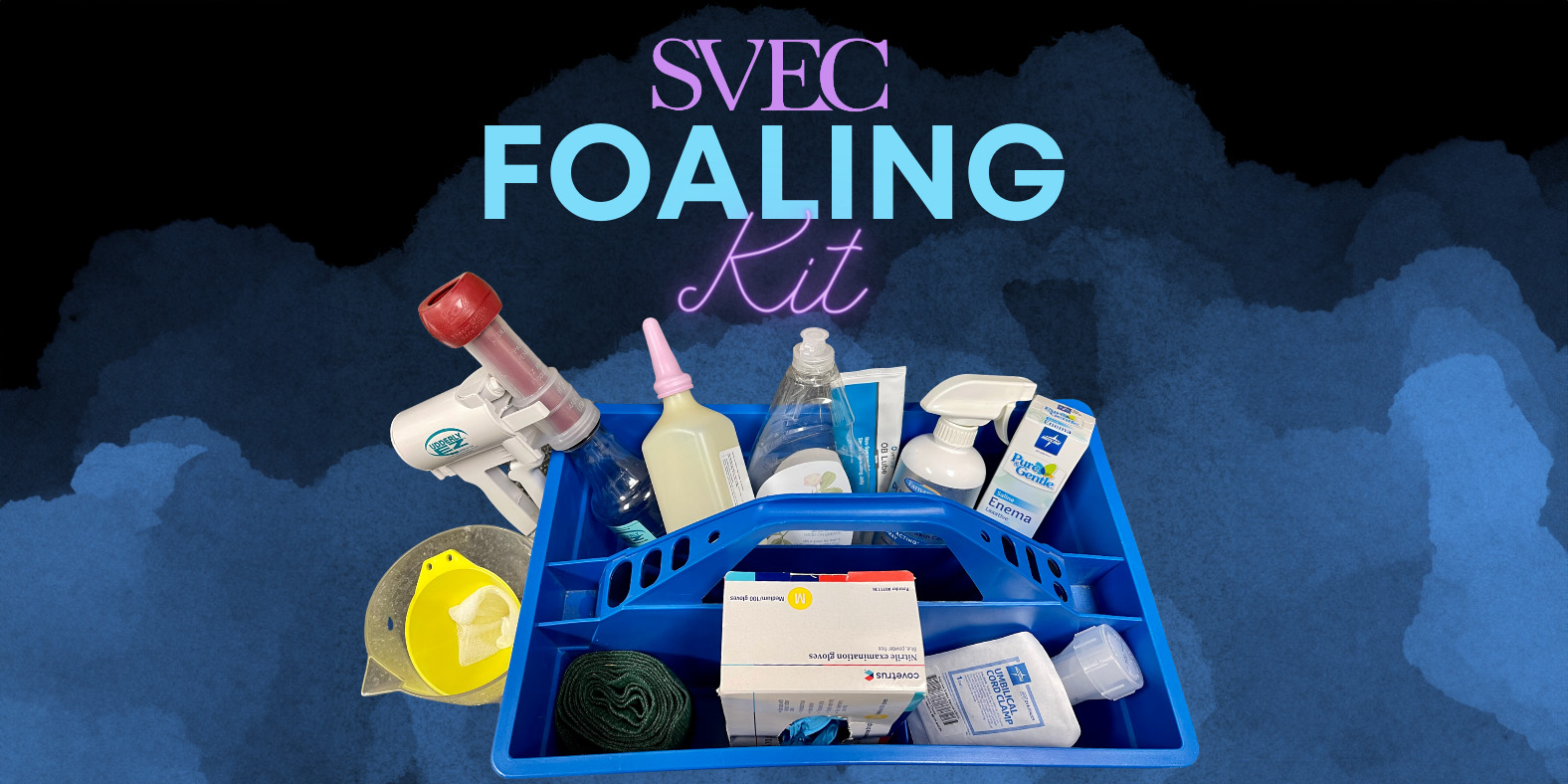Foaling season is right around the corner. Make sure you are prepared by having everything you need in one place. Here is a list of the important items to keep on hand.
- Emergency Plan
- Have a plan in place with your home veterinarian and their phone number handy in case of an emergency.
- Thermometer
- Monitor the temperature of your mare and newborn foal twice daily for the first 3 days. An elevated temperature can be an early indicator of a problem. A normal foal temperature is 99.5 – 102.1 and a normal adult horse is 99 – 101.5.
- Exam Gloves
- Gloves can be used to wash your mare prior to foaling and handling the placenta.
- Light and/or Flashlight
- Most mares foal at night, have a light on hand if needed and don’t forget the batteries.
- Liquid Ivory Soap and Cotton
- Wash the udders and vulva with warm water and Ivory soap, this should be done within 24 hours prior to foaling. This helps prevent foal form ingesting Clostridium or other bacteria when nursing.
- Obstetrical Lube
- In case of an emergency, lube and gloves can be used to check the position of fetus. A normal presentation resembles a diving position with the two front feet first with the soles down and then the nose. If the soles of the hooves are up, call your veterinarian immediately.
- Tail Wrap
- It can be helpful to use a tail wrap to keep hair out of the way during the foaling process and to wash the mare. Apply the tail wrap directly prior to foaling and remove tail wrap after to prevent cutting off circulation. Polo wraps work great for this!
- Umbilical Clamp or Tape
- Most umbilical cords break close to the foal (2-3cm) and clot naturally, if not the cord may need to be broken or cut. Clamp or tie off cord if bleeding occurs.
- Umbilical Cord Disinfectant
- Treating the umbilicus stump is the best way to prevent infection and help seal vessels within the cord. We use a spray like PuriShiled © or 1% Chlorhexidine solution. Treat the umbilicus twice daily for 3 days. Before treating, check the umbilicus for any abnormalities such as consent wetness (urine), swelling/inflammation, puss, or discharge. These are all indications of underlying conditions and need to be addressed by a veterinarian immediately.
- Towels
- In the colder months, clean towels can be used to help your foal dry quickly and stay warm. Try to wait until the mare has had a chance to lick and bond with the foal before drying them completely
- Phosphate Enema
- An enema can be administered to a newborn foal in the first 1-2 hours to prevent meconium impaction. Do not administer more than one enema without first consulting a veterinarian.
- Milking Supplies
- In the event the foal is unable to stand within the first 3 hours of life, milking may be needed. Wash her udders prior to milking and encourage your foal to nurse before bottle feeding. Supplies include Udderly EZ Mare Milker ©, measuring cup, funnel, gauze, bottle, and lamb nipple. Strain colostrum through gauze and into a bottle to be offered to the foal. You can also milk the mare by hand.
- Scissors
- Scissors can be used to cut open the placenta during a “red- bag” birth. A red bag occurs due to the premature separation of the placenta, where a brick red membrane protrudes through the vulva. This membrane needs to be cut open with the scissors immediately because of the foal’s high risk of Hypoxemia (low blood oxygen).
For more information on labor and delivery click here: Delivery for the Mare | Saginaw Valley Equine Clinic

